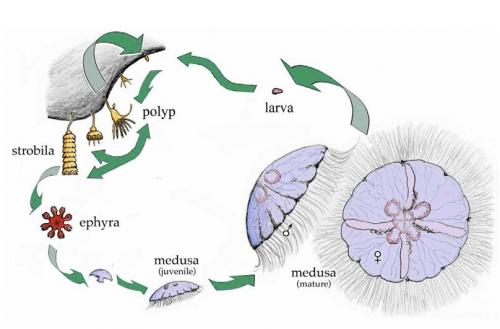Jellyfish are among the showoffs of the ocean. On the surface, they are flamboyant and splashy. By mid-summer in many temperate coastal waters, multitudes of jellyfish can be seen pulsating across the surface. Deep below their billowing bodies, however, jellyfish express their enigmatic side.

Like an ephemeral shape-shifter, the adult jellyfish we see propelling itself just beneath the surface has undergone sedentary (i.e. polyp) as well as free-floating juvenile phases in its life cycle.

To infiltrate the dynamics of this perplexing animal, the team on this expedition to the eastern Bering Sea plans on probing beneath the surface using a variety of tools. The data obtained will be used to construct a model of jellyfish dynamics. By measuring population sizes at different stages, we can estimate the rate of growth within a season. From a population model constructed with our cruise data, scientists can make predictions about how jellyfish respond to changing ocean temperatures and harvesting of commercial fish species.
Chrysaora melanaster, the northern sea nettle, is the jellyfish whose age-specific abundances we will be investigating. To do this, we will be using several instruments and techniques. In order to identify and measure adult and juvenile jellyfish, we will sample the water using plankton nets of two different sizes. The ZOOVIS imaging system will collect continuous observations of plankton and small jellyfish. The ARIS, a sonar-imaging technology, will be used simultaneously with the ZOOVIS to collect information on fish and large jellyfish.

This research will be carried out over two years and there will be sampling in the late spring and summer of each year.
This particular jellyfish, Chrysaora melanaster, is the focus of this research due to its great importance in the food web of the eastern Bering Sea. This voracious jellyfish eats both the food source and the young of commercial fish species, such as walleye pollock. By learning more about and quantifying the survival rates and age-specific abundances of these jellyfish, the research team will be able to devise a model to make predictions of their impact on the eastern Bering Sea food web.


Comments